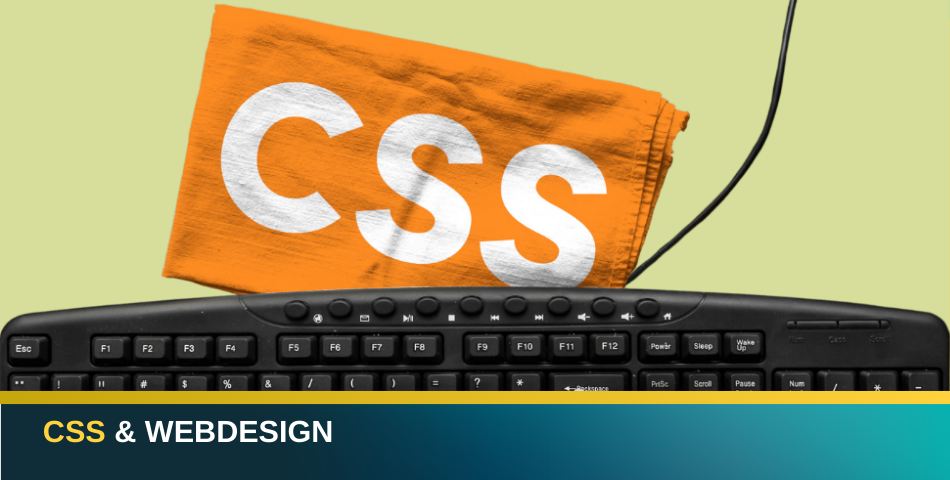CSS (Cascading Style Sheets), an essential element of web design, is a style for organizing and enhancing the visual presentation of HTML (Hypertext Markup Language) documents. CSS shapes the aesthetic appearance of web pages, improves usability, and organizes content. This article provides detailed information about what CSS is, how it works, and its key features.
What is CSS?
CSS is a scripting language for designing and editing web pages. HTML defines the content of a web page, while CSS determines how that content is displayed. By combining these two languages, web designers and developers can create user-friendly, attractive, and functional websites.
Basic CSS syntax
CSS is used to define the style of a specific element, especially in conjunction with HTML. Below is a simple example of CSS syntax:
selector {
property: value;
}
Selector: Selects the HTML element to which the CSS should be applied. For example, „h1“ can be used to select all heading elements (h1).
Property: Specifies the property to which the style should be applied. There can be many properties, such as font color, background color, width, etc.
Value: The value the specified property should take. For example, in the expression „Color: blue,“ „blue“ is the color value.
Advantages of CSS
- Separation of concepts: Because CSS can be used separately from HTML, content and style can be kept separate. This leads to a more organized and maintainable code structure.
- Modularity: CSS allows the use of style definitions in modules. This allows the same style rules to be used across multiple pages or projects.
- Consistency: By defining specific style rules, CSS ensures a consistent appearance across all pages of a website. This is important for maintaining brand integrity.
- Responsive design: CSS media queries allow websites to adapt to different screen sizes and devices, ensuring the website has the same quality on mobile devices and desktops.
CSS3 and advanced features
CSS3 is the latest version of CSS and includes many new features. Features such as shading effects, rotating objects, transitions, and animations are commonly used in modern web design. These CSS3 features give websites a more dynamic and impressive appearance.
Here are some of the most important advanced features of CSS3:
1. Rotating and panning (transformations):
CSS3 transformations allow for the easy application of transformations such as rotating, scaling, panning, and skewing elements. This feature can make web pages more dynamic and visually appealing. For example,
.element {
transform: rotate(45deg);
}
This code rotates the specified element by 45 degrees.
2. Transitions and animations:
CSS3 transitions and animations are used to add page transitions and element animations. This improves user interaction and makes the website look more modern and attractive. For example,
.button {
transition: background-color 0.3s ease;
}
.button:hover {
background-color: #3498db;
}
This code adds a smooth transition to change the background color of a button.
3. Shadows and frames (Box Shadows and Border Radius):
CSS3 includes two important features: adding shadows and rounding corners. Shadows highlight elements, while rounding corners softens hard edges. For example,
.box {
box-shadow: 5px 5px 5px 10px rgba(0, 0, 0, 0.1);
border-radius: 10px;
}
This code adds a light shadow to a box and rounds its corners.
4. Grid and Flexbox:
CSS Grid Layout and Flexbox are used to more effectively control page layout and element placement. Grid creates two-dimensional layouts, while Flexbox provides flexibility in one-dimensional layouts. For example,
.container {
display: Grid;
grid-template-columns: repeat(3, 1fr);
}
.item {
display: flex;
justify-content: center;
align-items: center;
}
This code splits a container into three columns and aligns the elements in the middle.
5. Media Queries:
CSS3 media queries are used to define specific style rules for different screen sizes and devices. This feature ensures compatibility with mobile devices by supporting responsive design. For example:
@media screen und (max-width: 600px) {
body {
font-size: 14px;
}
}
This code makes the text smaller if the screen width is less than 600 pixels.
The advanced features of CSS3 offer web designers and developers greater flexibility and creativity. Effective use of these features is essential for creating modern and interactive websites. Creative designs and user-friendly interfaces are made possible by the advanced features of CSS3.
CSS is an integral part of web design and plays a vital role in determining the aesthetics and usability of websites. After learning the basics, it’s possible to explore the advanced features of CSS to create more complex and advanced designs. Web designers and developers can create impressive content online by creating user-friendly, beautiful, and functional websites with CSS.

